There are six ways to store carrots for the winter: canning, freezing, pickling, dehydrating, cold storage in a root cellar, and refrigeration. Do it right and you can easily supply yourself with carrots until spring!
Some of these ways take more time, effort, or resources than others. I’ll go through each way, showing you how to do it (or providing a link), as well as talk about some of the pros and cons of each method.
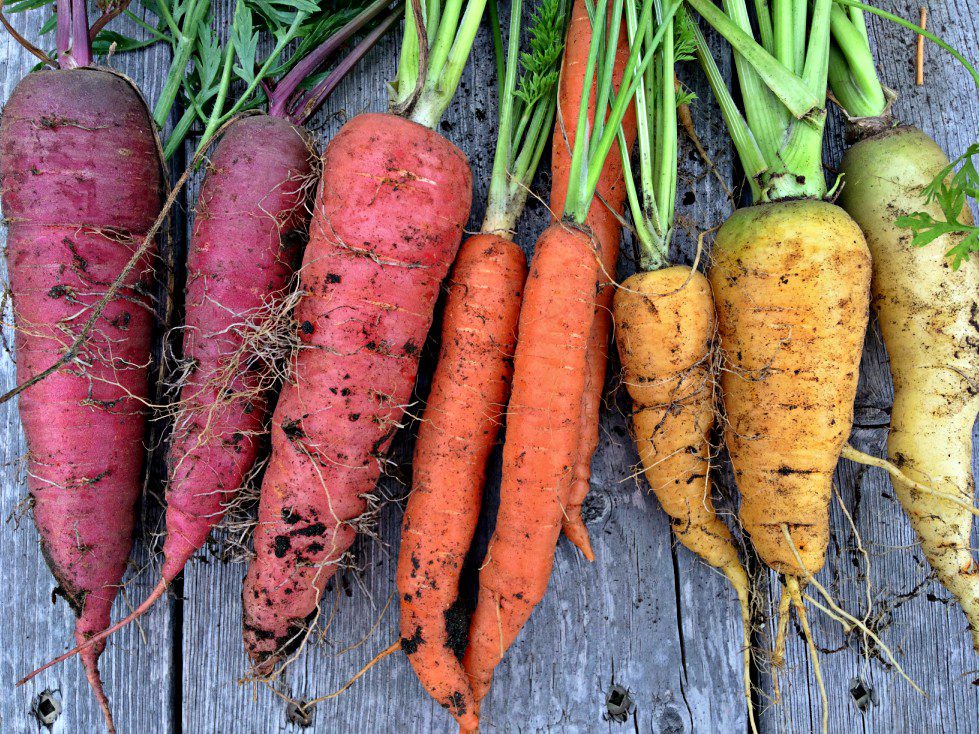
Storing Carrots in the Refrigerator
This is the method I use and is the easiest and quickest of all the methods. Unfortunately, it is not zero waste and requires that you have a decent amount of fridge space or an extra fridge.
- Wash your carrots and remove the greens.
- Fill a clear, plastic bag with carrots and add a sheet of paper towel.
- Tie the bag shut and poke a few holes in the plastic with a fork.
- Store in the refrigerator.
- Check carrots once a month and remove any mouldy or soft carrots.
Store Carrots in a Root Cellar
Before you reject this idea, thinking you don’t have a root cellar–think again. If you live in a warmer climate, you can easily make your own root cellar with a trash can or cooler dug into the ground. Here’s a comprehensive post on the different ways you can create your own root cellar from the Prairie Homestead.
In researching making my own root cellar, I found posts suggesting you could do this project from Zones 3-9, as long as you put more insulation on top of the lid the lower your growing zone is. I live in Zone 3, and while I could see this working, I really wouldn’t want to trudge out into my yard in the middle of a stretch of -30 and piles of snow drifts to go collect my carrots and potatoes. If you have tried this idea in a lower growing zone, let me know how it worked (or not) in the comments!
Not keen on the whole outdoor root cellar idea? You can always store your carrots in a container in your basement or heated garage with insulation. Here’s how.
- Put a small layer of insulation on the bottom of a large cardboard box or plastic tub. Insulation materials can be sand, shredded newspaper, sawdust, or leaves.
- Put a layer of unwashed carrots on top of the layer of insulation.
- Put another layer of insulation over your unwashed carrots.
- Repeat until the container is full.
Warning: Your carrots might still get mushy using this method if your basement or heated garage is damp.
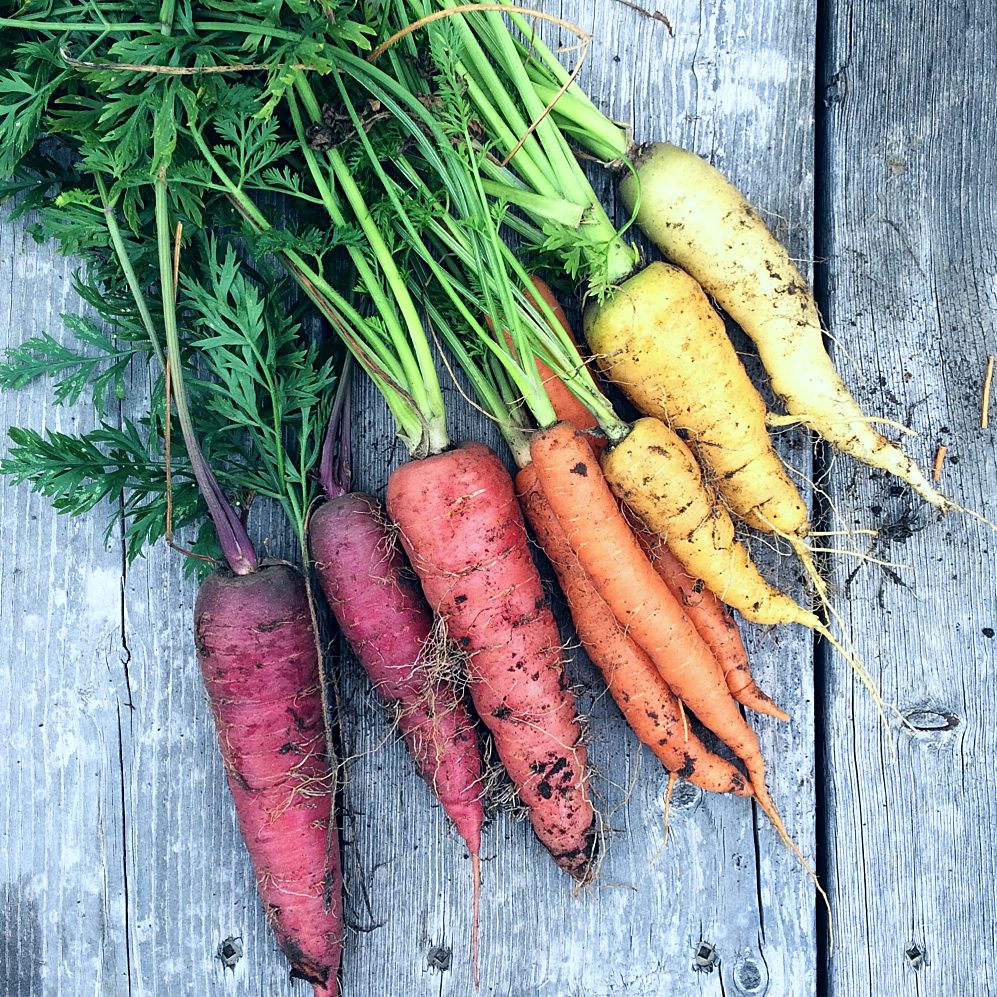
RELATED: HOW TO PRESERVE ONIONS UNTIL SPRING
Freezing Carrots
Freezing carrots has a few steps to it, but is less intensive than pressure canning. If you are going to use your carrots within a month, it is okay to clean them and freeze them in bags without boiling them. Storing them for longer? You’ll need to follow these steps so you don’t lose out on colour, flavour and nutrition:
- Wash carrots, remove greens and peel.
- Slice into your desired shape–cubes, coins, or shredded.
- Boil carrots for 3 minutes
- Transfer carrots into a large bowl filled with water and ice for 3 minutes.
- Remove carrots and store them in freezer-safe bags.
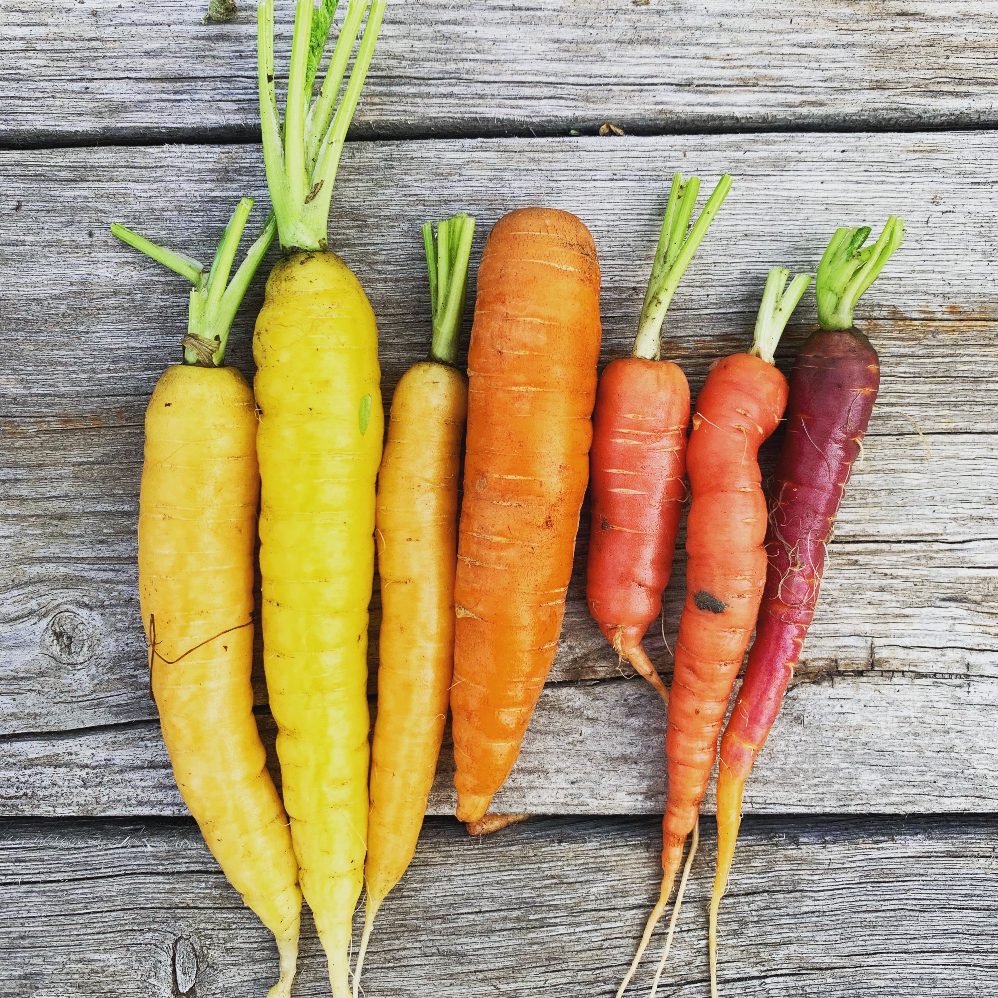
RELATED: WHAT GROWS IN ZONE 3
Quick Pickled Carrots
If you enjoy pickled carrots, pickling them is an easy way to preserve your harvest–especially if you skip the canning step and put your jars in the fridge. I personally have never pickled carrots, but here are a few recipes to get you started:
- Simple Refrigerator Sweet Pickled Carrots from the Kitchen Magpie
- Quick and Easy Refrigerator Pickled Carrots from the Domestic Dreamboat
- How to Make Quick Pickled Carrots from the Pioneer Woman
If you have a bit more time, you can can these recipes in a water bath to store out of the fridge!
Canning Carrots in a Pressure Canner
If you have the time and inclination, you can can the year’s carrot harvest with a pressure canner. Do not use a water bath to can carrots! Carrots are a basic vegetable, and a water bath can not kill all the bad bacteria unless the carrots are pickled.
I personally would be unlikely to use this method, but if you have a pressure canner and the time, here’s how to do it.
Dehydrating Carrots
I’ve also never personally dehydrated carrots, but I do own a dehydrator, and I can see this being a fairly easy way to preserve the harvest without refrigeration. Basically, the steps are exactly the same as freezing carrots, except the last step is to put them in the dehydrator, not the freezer. Because I know you’re not going to scroll up, here are the directions:
- Wash carrots, remove greens and peel.
- Slice into your desired shape. (Cubes, coins, or shredded)
- Boil carrots for 3 minutes
- Transfer carrots into a large bowl filled with water and ice for 3 minutes.
- Layer cooled carrots into the dehydrator and dehydrate for
- Dry at 125 degrees until dry and crispy. Check every few hours, or follow guidelines on your dehydrator.
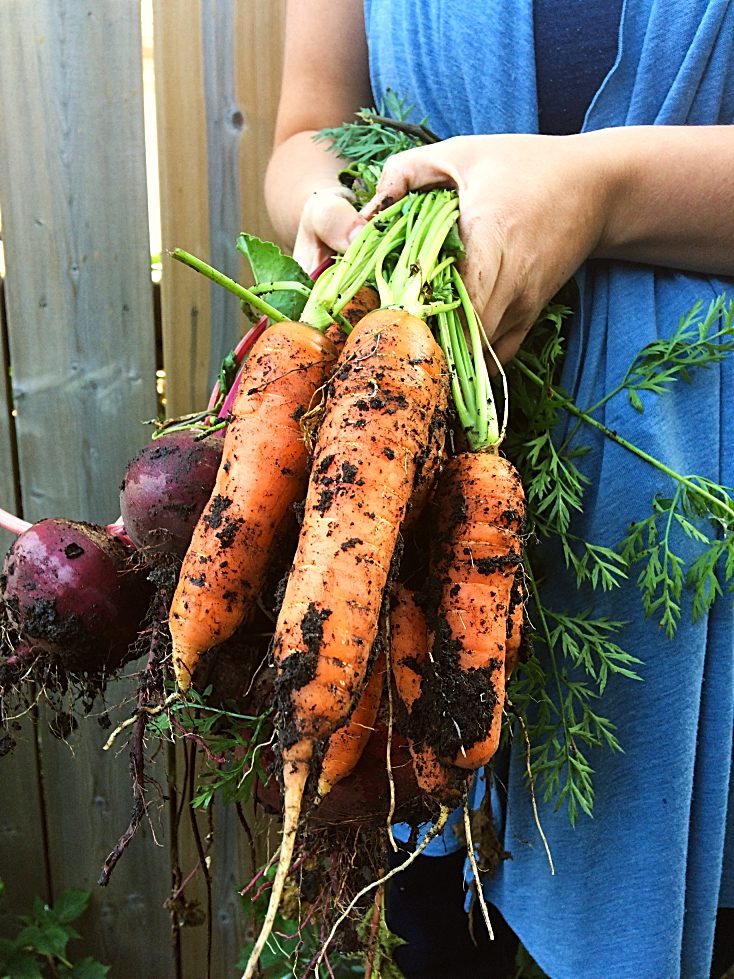
How do you store your carrots for the winter?
If you liked this blog post, find me on Facebook, TikTok, and Instagram for more cold-climate vegetable gardening tips, delicious recipes, and cut flower goodness! I also make weekly videos over on my YouTube channel. I hope to see you there!
P.S. If you love the content I create for Shifting Roots, consider joining our community on Patreon. Your support means the world to me and I am grateful for each and every one of you!
NEED HELP IN THE GARDEN?
Green thumbs aren’t just given out at birth. They’re a combination of learning about gardening and trial and error. If you wish you knew more about gardening and had more confidence in your abilities, you need the Growing Roots Gardening Guide. It’s an e-book plus 6 bonuses–everything you need to go from complete garden newb to confident in one growing season. Get all the details of what’s inside here!
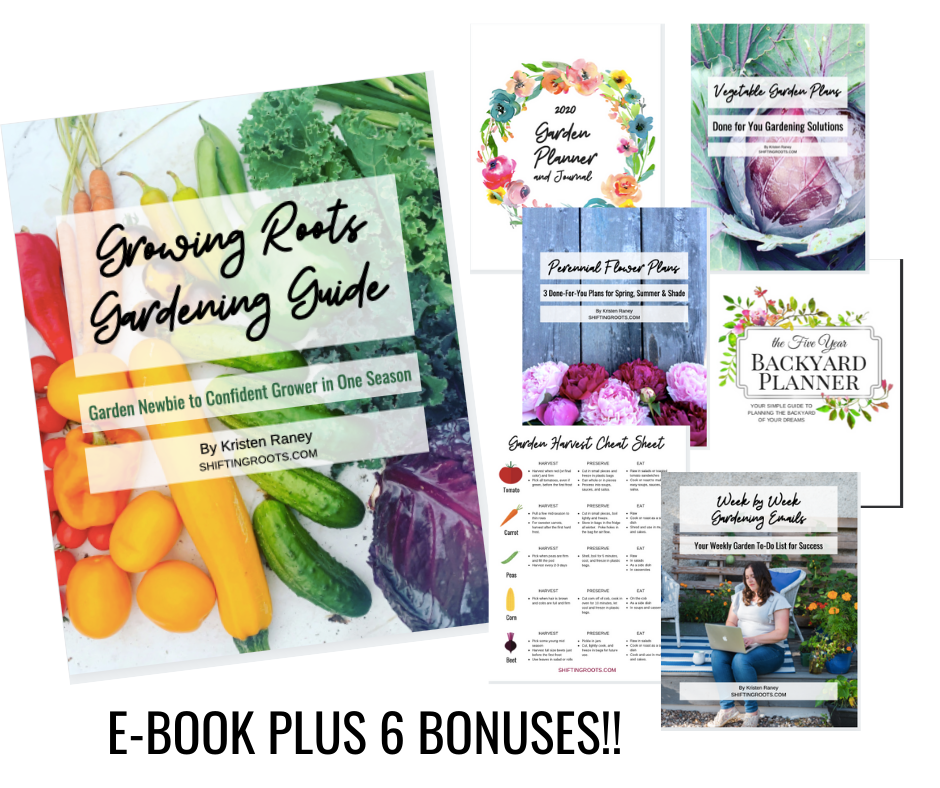

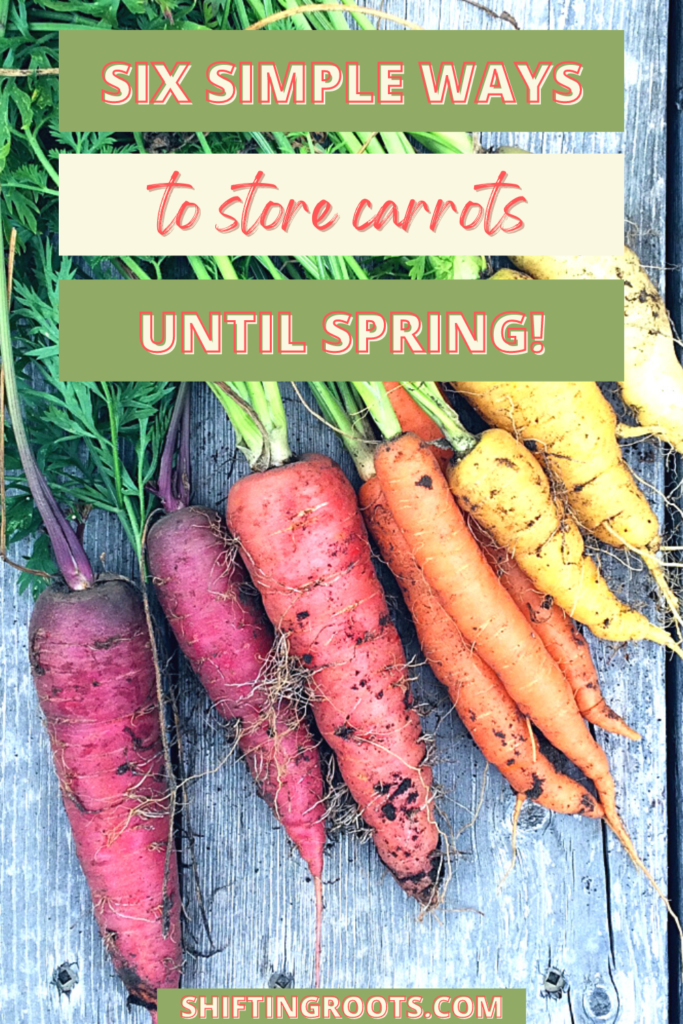
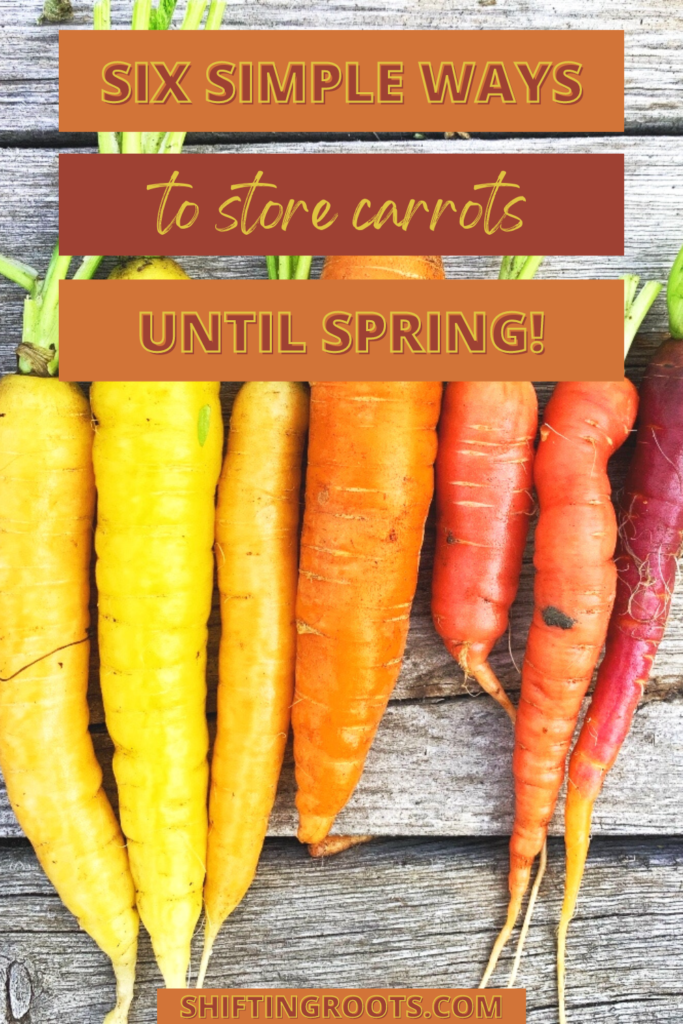

Maven
Kristen Raney
June R
Iris Thomas
Ellen
Callie